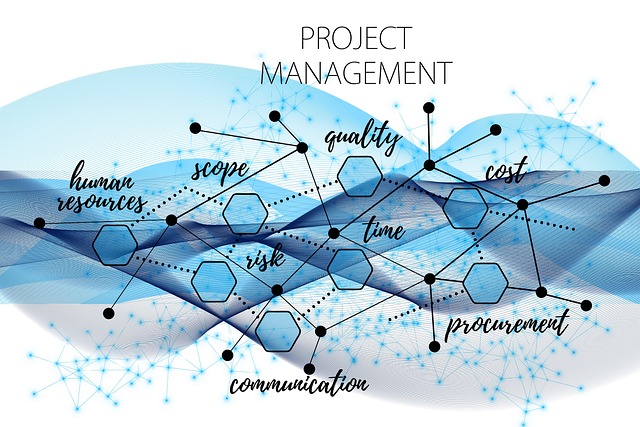Pain relief therapies utilizing regenerative medicine are transforming healthcare by harnessing the body's natural healing abilities. Techniques like stem cell therapy, platelet-rich plasma (PRP), and tissue engineering stimulate tissue repair, reduce inflammation, and treat conditions such as sports injuries and joint degeneration. These non-surgical, natural approaches offer lasting solutions, improved mobility, and holistic well-being without the risks associated with surgery, providing hope and healing for patients suffering from chronic musculoskeletal conditions.
Discover the revolutionary power of regenerative medicine in enhancing mobility and alleviating pain. This cutting-edge approach harnesses your body’s natural healing abilities, offering a non-surgical alternative for effective pain management. In this comprehensive guide, we explore the science behind various pain relief therapies, their remarkable benefits, and diverse treatment options. From real-life success stories to the latest advancements, learn how these techniques are transforming lives and redefining comfort.
- Understanding Regenerative Medicine: Unlocking the Body's Healing Potential
- The Science Behind Pain Relief Therapies: How They Work
- Benefits of Choosing Non-Surgical, Natural Approaches for Pain Management
- Exploring Different Types of Regenerative Treatments for Mobility Improvement
- Real-Life Success Stories: Transforming Lives with Advanced Pain Relief Techniques
Understanding Regenerative Medicine: Unlocking the Body's Healing Potential

Regenerative medicine represents a groundbreaking approach to healing and rejuvenation, harnessing the body’s natural ability to repair and regenerate damaged tissues. Unlike traditional medicine that often focuses on treating symptoms, this cutting-edge field aims to unlock the body’s inherent healing potential to enhance mobility and offer lasting pain relief therapies.
At its core, regenerative medicine involves the use of stem cells, growth factors, and other bioactive substances to stimulate tissue repair. By encouraging the body’s natural restorative processes, this innovative approach has shown promise in treating various conditions, from sports injuries and joint degeneration to chronic pain syndromes. The ultimate goal is to promote self-healing, reduce inflammation, and restore function, thereby improving patients’ quality of life.
The Science Behind Pain Relief Therapies: How They Work

Pain relief therapies, at their core, harness the body’s natural healing mechanisms through regenerative medicine. These innovative treatments offer a promising alternative to conventional pain management by encouraging tissue repair and regeneration. Key among these is cell-based therapy, which involves introducing specialized cells to damaged areas, stimulating them to differentiate into new tissues like bone, cartilage, or muscle, thereby repairing and replacing degenerated structures.
The effectiveness of pain relief therapies lies in their ability to not just mask pain but address its root cause. For instance, platelet-rich plasma (PRP) therapy utilizes the body’s own growth factors found in blood plasma, enriching them in areas of injury to accelerate healing and reduce inflammation. Similarly, stem cell therapy has shown remarkable potential by providing undifferentiated cells that can transform into various cell types needed for tissue regeneration. This multi-faceted approach ensures sustained pain reduction and improved mobility, transforming the landscape of pain management.
Benefits of Choosing Non-Surgical, Natural Approaches for Pain Management

Choosing non-surgical, natural approaches for pain management offers a range of benefits over traditional surgical interventions. These methods often provide lasting pain relief therapies without the associated risks and downtime commonly associated with surgery. Natural treatments like regenerative medicine focus on healing and rejuvenating the body’s tissues, which can be particularly effective in managing chronic conditions that cause persistent discomfort.
By opting for non-surgical solutions, individuals can experience improved mobility and reduced pain while avoiding potential complications from anesthesia and incisions. These gentle, yet powerful therapies tap into the body’s natural healing mechanisms, fostering a more holistic and sustainable approach to pain management. This not only provides immediate relief but also promotes long-term health and well-being.
Exploring Different Types of Regenerative Treatments for Mobility Improvement

Regenerative medicine offers a promising approach to enhancing mobility and alleviating pain, providing individuals with alternative treatment options for improved quality of life. This innovative field encompasses various techniques designed to stimulate the body’s natural healing processes, including tissue engineering, stem cell therapy, and growth factor injections.
One prominent treatment within this realm is platelet-rich plasma (PRP), which utilizes a patient’s own blood to accelerate the repair and regeneration of damaged soft tissues. Another emerging option is mesenchymal stem cell (MSC) therapy, known for its potential to differentiate into various cell types, contributing to tissue restoration and reducing inflammation. Moreover, growth factor injections directly target pain signals and promote cellular repair, making them valuable in managing chronic musculoskeletal conditions. These diverse pain relief therapies present exciting prospects for individuals seeking effective mobility improvement without invasive surgeries.
Real-Life Success Stories: Transforming Lives with Advanced Pain Relief Techniques

In the realm of healthcare, real-life success stories serve as powerful testaments to the transformative potential of advanced pain relief techniques. Patients who once struggled with chronic pain have found hope and healing through regenerative medicine, a cutting-edge approach that goes beyond traditional treatments. These innovative therapies offer not just symptom management but actual restoration of mobility and quality of life.
From athletes dealing with sports injuries to individuals affected by age-related conditions like arthritis, the diverse range of patients who have benefited from pain relief therapies is a testament to their effectiveness. Through regenerative practices such as platelet-rich plasma (PRP) injections and stem cell treatments, these advanced techniques stimulate the body’s natural healing processes. As a result, many have experienced significant reductions in pain levels, improved joint function, and accelerated recovery times, enabling them to regain control of their daily lives and return to their favorite activities with renewed vigor.
Regenerative medicine offers a promising path towards enhanced mobility and reduced pain, harnessing the body’s inherent healing capabilities. By understanding the science behind various pain relief therapies and exploring non-surgical, natural approaches, individuals can experience significant improvements in their quality of life. From targeted treatments to real-life success stories, the field continues to revolutionize pain management, providing hope and improved mobility for those seeking alternative solutions.
